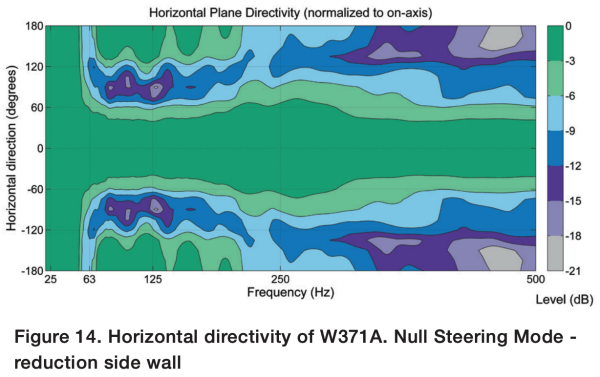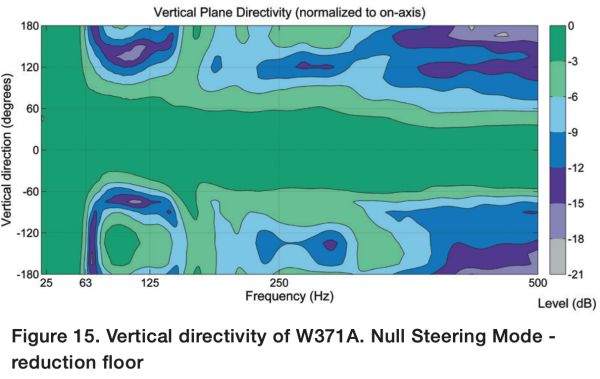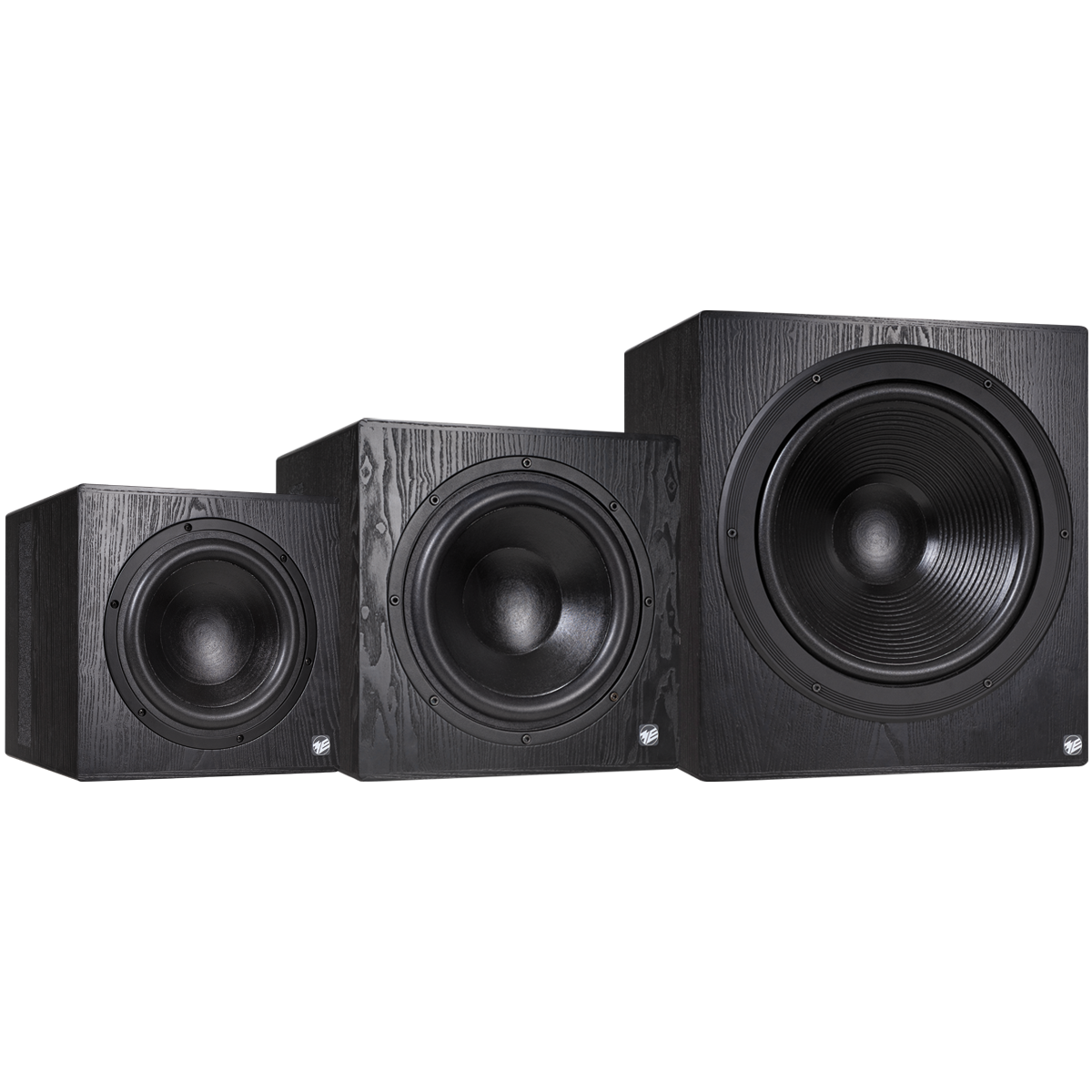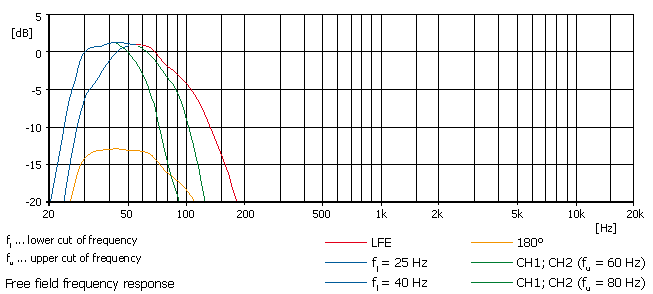-
WANTED: Happy members who like to discuss audio and other topics related to our interest. Desire to learn and share knowledge of science required. There are many reviews of audio hardware and expert members to help answer your questions. Click here to have your audio equipment measured for free!
You are using an out of date browser. It may not display this or other websites correctly.
You should upgrade or use an alternative browser.
You should upgrade or use an alternative browser.
Passive vs active DSP speakers KEF and Genelec
- Thread starter HooStat
- Start date
All other things being equal, yes. But this isn't the case in reality, as I listed numerous times.Again, I'm talking about the entire drivers. Not just the cone is smaller on a smaller driver, it just wont be able to take the same stresses ( and heat) as a bigger driver.
So you are saying that active speakers use better drivers by default? Active speakers are still limited by what the drivers can do in terms of extension and SPL. The choice that an active manufacturer can make is to adjust the natural roll-off of the driver by boosting it with the DSP, that limits SPL output because of the driver. So if you are touting the better low end extension of active loudspeakers you must take into account that you limit SPL doing it that way.All other things being equal, yes. But this isn't the case in reality, as I listed numerous times.
- Joined
- Jun 19, 2018
- Messages
- 6,652
- Likes
- 9,406
As I said, there's indeed almost no inherent advantage to active technology except steeper crossover slopes, which do matter near the limit.
The benefits go beyond merely the steepness of filter slopes.
Firstly, DSP allows for the delay of the signal to one driver relative to another. This allows for the location of a driver in the Z plane to be optimised largely independently of the location of other drivers in the same plane.
This may be useful, for example, when the optimal depth for a horn or waveguide places the acoustic centre of one driver in a non-optimal location in relation to the acoustic centre of another driver with which it crosses over.
Secondly, DSP allows for filter topologies that are not possible using passive components.
An example of this is from Horbach & Keele, who have described a particular filter topology that can be used to produce constant directivity across a wide frequency range using pairs of symmetrically arrayed drivers. This topology is realisable only through the use of FIR processing.
First, don't confuse active with DSP. Didn't I say "steeper crossover slopes" multiple times, already; you won't find Neumann's KH80DSP 48 dB/octave crossover on a passive model.So you are saying that active speakers use better drivers by default? Active speakers are still limited by what the drivers can do in terms of extension and SPL. The choice that an active manufacturer can make is to adjust the natural roll-off of the driver by boosting it with the DSP, that limits SPL output because of the driver. So if you are touting the better low end extension of active loudspeakers you must take into account that you limit SPL doing it that way.
Yes, you're right, I was arguing in the current SPL/LFX context.The benefits go beyond merely the steepness of filter slopes.
Firstly, DSP allows for the delay of the signal to one driver relative to another. This allows for the location of a driver in the Z plane to be optimised largely independently of the location of other drivers in the same plane.
This may be useful, for example, when the optimal depth for a horn or waveguide places the acoustic centre of one driver in a non-optimal location in relation to the acoustic centre of another driver with which it crosses over.
Secondly, DSP allows for filter topologies that are not possible using passive components.
An example of this is from Horbach & Keele, who have described a particular filter topology that can be used to produce constant directivity across a wide frequency range using pairs of symmetrically arrayed drivers. This topology is realisable only through the use of FIR processing.
View attachment 63255
- Joined
- Jan 15, 2020
- Messages
- 6,898
- Likes
- 16,902
You actually very rarely do, for example at Gauder Akustik loudspeakers which claim to have 50dB/oct or more crossover steepnessyou won't find Neumann's KH80DSP 48 dB/octave crossover on a passive model.
https://www.gauderakustik.com/images/Gauder_PDF/Produktuebersichten/Sammelübersicht_deutsch-2019-web.pdf
https://www.gauderakustik.com/index.php/en/about-us/philosophy
If it makes sense, is a different topic though.
- Joined
- Jun 19, 2018
- Messages
- 6,652
- Likes
- 9,406
You actually very rarely do, for example at Gauder Akustik loudspeakers which claim to have 50dB/oct or more crossover steepness
https://www.gauderakustik.com/images/Gauder_PDF/Produktuebersichten/Sammelübersicht_deutsch-2019-web.pdf
https://www.gauderakustik.com/index.php/en/about-us/philosophy
If it makes sense, is a different topic though.
Another example is Joseph Audio's "infinite slope" XO.
What software did you use to do this? Looks really interesting.
REW for the measurements and Parametric EQ to actually filter the output. Emotiva processors have PEQ onboard but now I use Equalizer APO for windows with the Peace addon.
That's a perfect comparison. One caveat here is that you wouldn't know about that 2k resonance without good measurements. Most speakers don't have that luxury.
True but that's a huge benefit of this site, eventually we will have measurements of many more speakers. It's starting to be obvious that most passive speakers need a bit of EQ to sound their best but yes you do need a proper CTA-2034 measurement to make sure you're not doing more harm than good.
You actually very rarely do, for example at Gauder Akustik loudspeakers which claim to have 50dB/oct or more crossover steepness
https://www.gauderakustik.com/images/Gauder_PDF/Produktuebersichten/Sammelübersicht_deutsch-2019-web.pdf
https://www.gauderakustik.com/index.php/en/about-us/philosophy
If it makes sense, is a different topic though.
Jean Maurer also:
https://www.jeanmaurerhifi.ch/annex...15-04-16-hifi-jean-maurer-son-et-image-en.pdf
- Joined
- Jun 5, 2016
- Messages
- 2,874
- Likes
- 4,674
As I said, there's indeed almost no inherent advantage to active technology except steeper crossover slopes, which do matter near the limit.
The ability to apply boost as well as cuts is also an inherent advantage. Likewise the precision with which filters can be applied is an advantage. Finally, in active designs limiters can be used to protect components and increase perceived dynamic range.
- Joined
- Jan 23, 2020
- Messages
- 4,336
- Likes
- 6,705
Disagree here.but you'd probably need the ridiculously expensive W371A to compare them directly.
There a $3k-$4k subs out there that easily outperform the W371A. No need to waste that much money, unless you just want matching gear for the sake of it.
Disagree here.
There a $3k-$4k subs out there that easily outperform the W371A. No need to waste that much money, unless you just want matching gear for the sake of it.


Did you read what the W371A does? The point is that I was comparing D&D or Kii with Genelec, both who have cardioid dispersion in the LF; Genelec does have cardioid capabilities, but only with the W371A.
I'd like to see those $3-4k cardioid subs with a 23-500 Hz (-6 dB) response, though. You have ME Geithain's subwoofers:

* Basis 11K, 2750£, 112 dB at 1m, 25-80 Hz
* Basis 14K, 3700£, 122 dB at 1m, 25-80 Hz (I love ribbed cones like this)

Last edited:
Basically, you'll like Revel if you wear a Rolex/Omega, but I'm pretty sure you'll find more Casio/Seiko amongst the Genelec crowd.

- Joined
- Jan 23, 2020
- Messages
- 4,336
- Likes
- 6,705


Did you read what the W371A does? The point is that I was comparing D&D or Kii with Genelec, both who have cardioid dispersion in the LF; Genelec does have cardioid capabilities, but only with the W371A.
I'd like to see those $3-4k cardioid subs with a 23-500 Hz (-6 dB) response, though. You have ME Geithain's subwoofers:

* Basis 11K, 2750£, 112 dB at 1m, 25-80 Hz
* Basis 14K, 3700£, 122 dB at 1m, 25-80 Hz (I love ribbed cones like this)

Yeah, I guess if you're aiming for cardioid dispersion in the bass, then that looks like a great sub. Based on the success of loudspeakers like D&D 8c and Kii 3, it does seem that some people really do prefer it (don't they only take it down to 100hz or so?). I could see where this would be preferable in some situations(primarily for mixing) where you can only have 1 or 2 subs, and you're forced to position them up front with the mains, as it better avoids nasty room interactions. The narrow vs wide dispersion thing fascinates me, as it seems there are logical people and arguments on both sides of the debate. Do you prefer a cardioid bass response?
As someone not into mixing, and just looking to enjoy the sound, I see cardioid bass as a negative, not a positive, so these graphs only serve to shoot this sub further down the value ladder. I've heard these subs before, and I'm not a fan. Having gone to a few shows and having heard other systems now, I've come to learn that I pretty much unanimously prefer wide dispersion(at least in most rooms). Somewhat unfortunately, I learned this after buying my expensive narrow dispersion speakers
 . Oh well, lessen learned. I really want to hear a good omni someday, as I'm curious to know if my preference for wide dispersion has it's limits. So far, I haven't found those limits.
. Oh well, lessen learned. I really want to hear a good omni someday, as I'm curious to know if my preference for wide dispersion has it's limits. So far, I haven't found those limits.The great thing about bass (for me) is that you essentially get that wide dispersion for free. I love that you can get 4 well positioned subs tuned so that no matter where you move around the room, you still feel and hear that wonderful, even bass. I'm a bass lover, and that's my audio nirvana.
And yes, (-6db) @23hz is not so great in my eyes, even for a $4k sub, and this is $7k
*Edit: By "these subs" I meant cardioid subs. I've never heard these particular Genelec subs.
Last edited:
Wide or narrow dispersion usually doesn't refer to bass, and I've yet to hear someone who doesn't like the Kii, D&D or ME Geithain. I'm pretty sure that under 80 Hz or so, where you can't easily locate the sound source, dispersion reasoning is simply not the same as the rest of the audible band.Yeah, I guess if you're aiming for cardioid dispersion in the bass, then that looks like a great sub. Based on the success of loudspeakers like D&D 8c and Kii 3, it does seem that some people really do prefer it (don't they only take it down to 100hz or so?). I could see where this would be preferable in some situations(primarily for mixing) where you can only have 1 or 2 subs, and you're forced to position them up front with the mains, as it better avoids nasty room interactions. The narrow vs wide dispersion thing fascinates me, as it seems there are logical people and arguments on both sides of the debate. Do you prefer a cardioid bass response?
As someone not into mixing, and just looking to enjoy the sound, I see cardioid bass as a negative, not a positive, so these graphs only serve to shoot this sub further down the value ladder. I've heard these subs before, and I'm not a fan. Having gone to a few shows and having heard other systems now, I've come to learn that I pretty much unanimously prefer wide dispersion(at least in most rooms). Somewhat unfortunately, I learned this after buying my expensive narrow dispersion speakers. Oh well, lessen learned. I really want to hear a good omni someday, as I'm curious to know if my preference for wide dispersion has it's limits. So far, I haven't found those limits.
The great thing about bass (for me) is that you essentially get that wide dispersion for free. I love that you can get 4 well positioned subs tuned so that no matter where you move around the room, you still feel and hear that wonderful, even bass. I'm a bass lover, and that's my audio nirvana.
And yes, (-6db) @23hz is not so great in my eyes, even for a $4k sub, and this is $7k. You could get 4 well placed $2k subs and have a completely flat response down to 10hz across all seats, and it would only cost you $1k more. Given how easy subs are (relative to loudspeakers) to make, DIY is no doubt the king of value, if you're up for the challenge. I'm not.
*Edit: By "these subs" I meant cardioid subs. I've never heard these particular Genelec subs.
The other thing is that this W371A is much more like a $50k Beolabs than a sub, as its point really is directivity shaping (there are at least three modes: constant directivity and null steering back wall/side walls) and maybe SPL, not "boom" for money. You really pay for the DSP more than the drivers/enclosure.
But really, I think flush mounting may well be a better solution, if you're in a studio. Or MEG's RL901K.
As interesting as the the ME Geithain stuff is, I have no idea how you can even go about buying it outside of Europe. They're not listed on Thomann.de, and I've never seen a Canadian or US vendor carry them. So most likely it'd be impossible to get them serviced here as well. It's rather unfortunate since they seem to be up there with Genelec and Neumann technologically.
- Joined
- Jan 23, 2020
- Messages
- 4,336
- Likes
- 6,705
Wide or narrow dispersion usually doesn't refer to bass, and I've yet to hear someone who doesn't like the Kii, D&D or ME Geithain. I'm pretty sure that under 80 Hz or so, where you can't easily locate the sound source, dispersion reasoning is simply not the same as the rest of the audible band.
The other thing is that this W371A is much more like a $50k Beolabs than a sub, as its point really is directivity shaping (there are at least three modes: constant directivity and null steering back wall/side walls) and maybe SPL, not "boom" for money. You really pay for the DSP more than the drivers/enclosure.
But really, I think flush mounting may well be a better solution, if you're in a studio. Or MEG's RL901K.
I've never heard the Kii or the D&D. My experience with cardioid subs is limited to a pro setting. I've never heard cardioid in a typical home environment, so perhaps it's a bit unfair to compare.
I agree with you that dispersion preferences may be different for bass. This is partly why I want to hear a good omni speaker. I know for sure that I prefer omni bass(at least in terms of value), but I'd love to see if that carries over to the higher frequencies. My gut tells me it probably won't.
Even with DSP, I still don't think these subs are a very good value. DSP in the bass is easy and cheap, and you can essentially get "perfect" bass down to 10hz for $10k(4 x $2.5k subs) in most residential rooms. I definitely see the value in great engineering from companies like Genelec and others for loudspeakers, as the higher frequencies require much better engineering to perfect. Bass is (relatively) easy to perfect, and kinda hard to get wrong. I think this is probably why DIY is a such a good value for bass and not so much outside of that.
To me, the most interesting thing about this sub is it's high frequency extension. Perhaps it would make a good midbass module, though I'd still want to low pass it at 100hz or so to get the omni directivity below that. I think it fits well and is a good value add for smaller Genelecs(like the Ones) that are heavily spl limited by their lower end, but I think it's a relatively poor value for ULF.
For comparison, both my subs that I have now have a -3db of 16hz, more total output, and both of them combined cost less than 1 of these. I'm sure you could get even better value with DIY. In room, my -6db point is below 5hz, with only two deviations from ruler flat (across 6 seats): one null at 11hz, and one peak at 7hz. I'm skeptical that just one of these could come close to equalling that sound quality.
Btw, I'm not saying these aren't good subs, merely that they're not a very good value, and this is coming from someone who thinks Genelec usually offers incredible value(perhaps the best in the industry).
Last edited:
The W371a's frequency range also comfortably covers the range where 83xx have the lowest SPL limitations(where the woofer takes over, usually below 500hz or 320hz for the larger ones). So it might add as much as 15-20db of output to the whole system, making them maybe even loud for people who want farfield listening in larger rooms. Any subwoofer arrangement can probably add only about 10db at most, since it still leaves the range from 100-300hz up to the speaker's woofer.
Similar threads
- Replies
- 34
- Views
- 4K
- Replies
- 3
- Views
- 815
- Replies
- 168
- Views
- 19K
- Replies
- 23
- Views
- 2K
